 In this Spotlight, we highlight innovations and research in life sciences teaching and learning. Five projects describe the specific subdisciplines and practices they focus on, unique challenges and opportunities they've observed in this field, the scientific and technological advances they're leveraging, and how they've incorporated ethical considerations into their work. The Spotlight also includes a list of other active and recent DRK-12 projects, DRK-12 publications, and other resources related to life sciences education.
In this Spotlight, we highlight innovations and research in life sciences teaching and learning. Five projects describe the specific subdisciplines and practices they focus on, unique challenges and opportunities they've observed in this field, the scientific and technological advances they're leveraging, and how they've incorporated ethical considerations into their work. The Spotlight also includes a list of other active and recent DRK-12 projects, DRK-12 publications, and other resources related to life sciences education.
In this Spotlight...
- Featured Projects
- CAREER: Creatively Reimagining Engagements with Data in Biology Learning Environments (PI: Joshua Rosenberg)
- Developing an Online Game to Teach Middle School Students Science Research Practices in the Life Sciences (PIs: David Gagnon, Ryan Baker)
- Empowering Teachers to See and Support Student Use of Crosscutting Concepts in the Life Sciences (PI: Chad Gotch)
- Fostering Computational Thinking Through Neural Engineering Activities in High School Biology Classes (PI: Ido Davidesco)
- How Deep Structural Modeling Supports Learning with Big Ideas in Biology (PI: Shemwell, Capps)
- Additional Projects
- Related Resources
Featured Projects
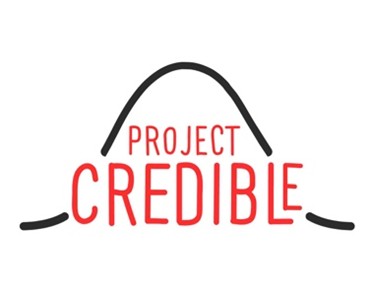
CAREER: Creatively Reimagining Engagements with Data in Biology Learning Environments
PI: Joshua Rosenberg
Specific Disciplines or Concepts: Ecology, Environmental Science
Grade Levels: Middle, High
Project Description: Project Creatively Reimagining Engagements With Data in Biology Learning Environments (CREDIBLE) is a research-practice partnership that is intended to advance how middle and high school students use data in science classrooms. The project has four core tenets: (1) place-based education, (2) an Ambitious Science Teaching approach to developing curricula, (3) the data investigation process, and (4) probabilistic thinking. These tenets are collectively intended to support middle and high school science teachers to integrate opportunities for their students to use data in more complex and personally relevant ways. We have been closely collaborating with more than two dozen educators from schools and districts across Tennessee through a summer professional learning experience held at the Great Smoky Mountains Institute at Tremont (in the Great Smoky Mountains) and follow-up professional learning opportunities and support throughout the school year. At its conclusion, this project will have introduced new teaching strategies, pen-and-paper and digital tools, and curricular materials for others seeking to advance how students use data in K-12 science education. In all, this work is intended to offer a scalable approach for K–12 science education that is data-rich, tied to teachers’ standard, and connected to place.
Challenges and Strategies for Addressing Them: We are focused on science and engineering practices related to working with data: analyzing and interpreting data, using mathematics and computational thinking, and planning and carrying out investigations. One tension that has emerged in this work is the challenge of collecting and analyzing authentic data sources. Though it is true (in our experience) that data is everywhere, both collecting or creating that data and analyzing it present often hard-to-anticipate challenges. For example, when we tried to support a teacher to access local data on water quality to augment the smaller data that their students collected, we found a number of data sources, but all required extensive cleaning and preparation to be useful; in some cases, the data was practically impossible to use! We are working with teachers to develop strategies and technological supports to make authentic but messy data more usable to them.
Scientific or Technological Advances Leveraged: One scientific or technological advance we are leveraging is in Bayesian statistics. Our approach to supporting probabilistic thinking is grounded in Bayesian data analysis methods, as such methods intrinsically yield probabilistic (rather than deterministic, i.e. “yes or no”) answers to questions. These approaches are increasingly relevant through a range of statistical software and we are working to bolster the accessibility of Bayesian data analysis by creating pen-and-paper approaches as well as a web-based application that can be integrated into or used alongside various data analysis platforms (e.g., CODAP, DataClassroom, and Google Sheets).
Initial Findings: We have developed an approach to make probabilistic thinking accessible to middle and high school students called “The ABCs of Data”. This approach captures the core elements of the Bayesian data analysis approach: (A) account for what you already know (express your initial confidence), (B) be open to evidence (consider how strong the evidence for your initial idea or hypothesis is), and (C) consider your confidence now (use Bayes’ Theorem to update your confidence in light of your initial confidence and the weight of the evidence) using the web application here. We also wrote a paper for The Science Teacher (Rosenberg et al., in press) on this approach.
We also wrote a paper on a different approach to Bayesian data analysis, one that is a bit more complex in that it requires using data (rather than analyst’s assessment of the weight of the evidence). This is described in Dogucu et al. (2024).
Products:
- Project Website
- Publications
- Dogucu, M., Kazak, S., & Rosenberg, J. M. (2024). The design and implementation of a bayesian data analysis lesson for pre-service mathematics and science teachers. Journal of Statistics and Data Science Education, 33(2), 177-188. https://doi.org/10.1080/26939169.2024.2362148
- Rosenberg, J., & Jones, R. S. (2024). Data science learning in grades K–12: Synthesizing research across divides. Harvard Data Science Review, 6(3). https://doi.org/10.1162/99608f92.b1233596
- Rosenberg, J., Kubsch, M., Sorge, S., Tautz, S., Pritchard, C., Garner, A., & Xu, Z. (in press). Embracing uncertainty in science: The ABCs of data and the confidence updater. Science Scope. https://osf.io/rg6xb
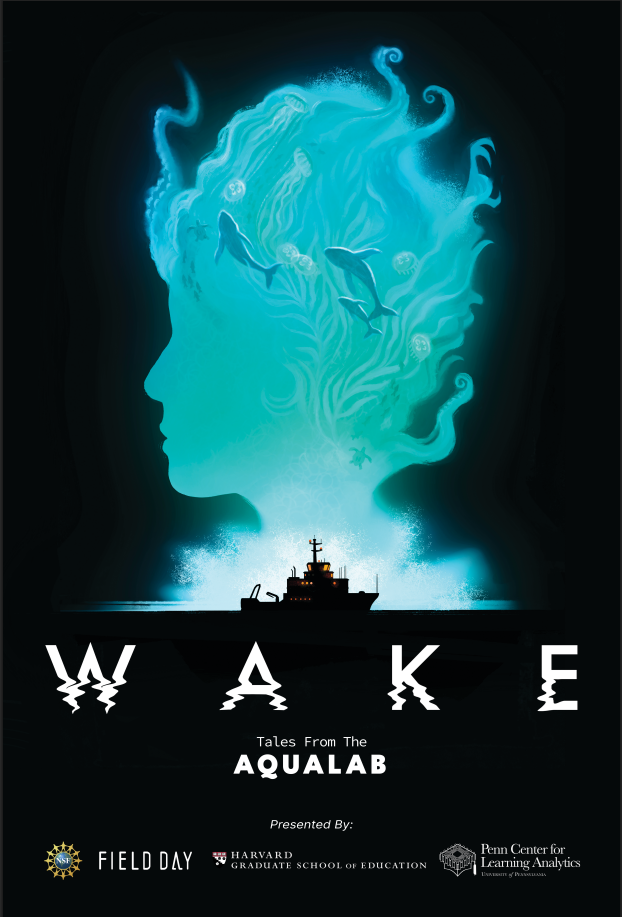
Developing an Online Game to Teach Middle School Students Science Research Practices in the Life Sciences
PIs: Ryan Baker, David Gagnon
Specific Disciplines or Concepts: Ecology and ecosystems, biodiversity and species interactions, experimental design and data collection, human impact on marine environments, sustainability and resource management
Grade Levels: 7-9
Project Description: Wake: Tales from the Aqualab is a digital learning game that immerses middle school students in the role of marine science interns working aboard a research vessel. Through playful missions and open-ended investigations, students design experiments, analyze ecological data, and explore how human activity affects ocean ecosystems. The game situates core life science concepts (e.g. biodiversity, food webs, and sustainability) within authentic problem-solving contexts where students must balance curiosity-driven exploration with responsibility to both the scientific community and the natural world.
What makes Wake unique is its integration of game-based learning with educational data mining pipelines. Using the game’s large audiences (280,000 plays since launch) and the Open Game Data infrastructure (Gagnon & Swanson, 2023), the team has been able to model when and why students struggle within the 2 dimensional progression of science practices and science content, then make predictions on how any given player is likely to perform on a future challenge (Liu et al. 2025). These models were then deployed as realtime adaptive features that guide players toward appropriate challenges. We are currently running a large scale experiment to explore how these data-informed recommendations support different learners.
Wake responds to the challenge of bridging disciplinary science practices with classroom realities by offering teachers a rich set of supports (teacher dashboard, classroom guide, curricular tie-ins). Early findings (Metcalf, Scianna, & Gagnon, 2024) suggest that students report strong personal and social immersion, which can shift attitudes toward science and expand their sense of who can be a scientist.
In short, Wake is both a curricular resource and a research platform, designed to advance life science learning while contributing to the broader field of game-based education research.
Science and Engineering Practices Addressed: Formulating hypotheses, designing experiments, interpreting data, revising in response to evidence (aligned with NGSS practices)
Challenges and Strategies for Addressing Them: Capturing authentic experimentation in a digital medium; addressed through iterative design informed by learning progressions (Metcalf et al., 2021).
Scientific or Technological Advances Leveraged: Game-based analytics pipelines (Swanson & Gagnon, 2025) enable scalable study of student decision-making, such as when and why players abandon experiments (Liu et al., 2025).
Connections to Other Disciplines or Student Experiences: Wake links ecological science to student agency, and ethical questions of resource use and sustainability.
Initial Findings:
- Students exhibit shifts in attitudes and beliefs about science after extended play (Metcalf, Gagnon, & Slater, 2023).
- Open Game Data pipelines successfully model experimentation behaviors, making it possible to detect moments of struggle and persistence (Liu et al., 2023).
- Immersive play supports personal engagement and social collaboration in classroom contexts (Metcalf, Scianna, & Gagnon, 2024).
Products:
- Wake Game Website
- Wake Teacher Guide
- Wake Datasets
- Research Papers
- Gagnon, D. J., Swanson, L., & Harpstead, E. (2024). Open game data: Defining a pipeline and standards for educational data mining and learning analytics with video game data. IEEE CoG.
- Metcalf, S., Scianna, J., & Gagnon, D. (2024). Experiences of personal and social immersion in a videogame for middle school life science. iLRN 2024.
- Gagnon, D., Swanson, L. (2023). Open game data: A technical infrastructure for open science with educational games. In M. Haahr, A. Rojas-Salazar, & S. Göbel (Eds.), Serious Games. JCSG 2023. Lecture Notes in Computer Science, vol 14309. Springer, Cham. https://doi.org/10.1007/978-3-031-44751-8_1
- Liu, X., Slater, S., Swanson, L., Metcalf, S. J., Gagnon, D. J., Baker, R. S. (2025). Identifying when and why students choose to quit jobs in a science exploration game. In J. L. Plass & X. Ochoa (Eds.), Serious Games. JCSG 2024. Lecture Notes in Computer Science, vol 15259. Springer, Cham. https://doi.org/10.1007/978-3-031-74138-8_5
- Metcalf, S., Scianna, J., & Gagnon, D. (2024). Experiences of personal and social immersion in a videogame for middle school life science. Academic Proceedings of the 10th International Conference of the Immersive Learning Research Network (iLRN2024), 201–209. https://doi.org/10.56198/U6C0WZQ4R
- Scianna, J. & Kim, Y. (2024). Assessing experimentation: Understanding implications of player choices. In R. Lindgren, T. I. Asino, E. A. Kyza, C. K. Looi, D. T. Keifert, & E. Suárez (Eds.), Proceedings of the 18th International Conference of the Learning Sciences - ICLS 2024 (pp. 1594-1597). International Society of the Learning Sciences. https://doi.org/10.22318/icls2024.608791
- Liu, X., Slater, S., Andres, J., Swanson, L., Scianna, J., Gagnon, D., Baker, R. S. (2023). Struggling to detect struggle in students playing a science exploration game. In CHI PLAY Companion '23: Companion Proceedings of the Annual Symposium on Computer-Human Interaction in Play. https://dl.acm.org/doi/10.1145/3573382.3616080
- Metcalf, S. M., Gagnon, D., Slater, S. (2023). Shifts in student attitudes and beliefs about science through extended play in an immersive science game. 2023 9th International Conference of the Immersive Learning Network (iLRN). San Luis Obispo, USA.
- Kim, Y. J., Metcalf, S. M., Scianna, J., & Gagnon, D. (2022). Aqualab: Establishing validity of an adventure game for middle school science practices. Proceedings of the 30th International Conference on Computers in Education. Kuala Lumpur, Malaysia.
Suggested Reading:
- Gagnon, D., Swanson, L. (2023). Open game data: A technical infrastructure for open science with educational games. In M. Haahr, A. Rojas-Salazar, & S. Göbel (Eds.), Serious Games. JCSG 2023. Lecture Notes in Computer Science, vol 14309. Springer, Cham. https://doi.org/10.1007/978-3-031-44751-8_1
- Metcalf, S. M., Gagnon, D., Slater, S. (2023). Shifts in student attitudes and beliefs about science through extended play in an immersive science game. 2023 9th International Conference of the Immersive Learning Network (iLRN). San Luis Obispo, USA.
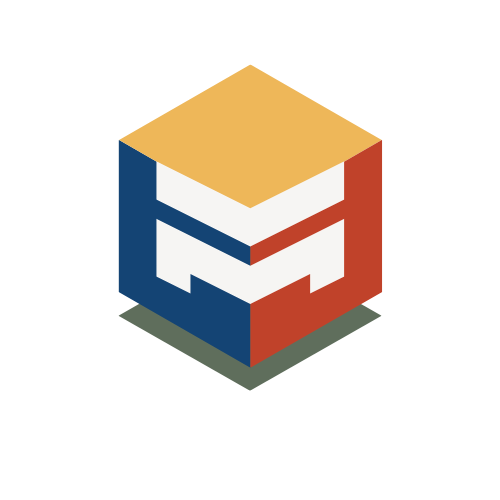
Empowering Teachers to See and Support Student Use of Crosscutting Concepts in the Life Sciences
PI: Chad Gotch | Co-PIs: Emma McMain, Joshua Premo
Specific Disciplines or Concepts: This project works across all life science concepts, but pays particular attention to cellular and molecular biology.
Grade Levels: High
Project Description: We worked with partner teachers to develop a suite of integrative tools to support phenomenon-based science instruction in high-school life sciences. These tools focus on the intersection of visual modeling and the sense-making lenses of the crosscutting concepts from the Next Generation Science Standards (NGSS). Crosscutting concepts (CCCs) are a core part of 3-Dimensional science instruction, yet have received less attention than the other two dimensions. CCCs have the potential to increase the power of student explorations and support their sensemaking around science phenomena. CCCs can also be transferred across knowledge domains and thus be useful across science disciplines. The power of 3-Dimensional science instruction comes from weaving together the different dimensions. Our project combines attention to the CCCs with support for the Science and Engineering Practice of Developing and Using Models. Although there are many ways to model, we focused on the process of visual modeling through scientific drawing. Drawing is an active process that stimulates learning of both concrete and abstract phenomena better than other strategies, such as reading, self-explanation, and imagining. The result of our efforts is the VMC3 Resource Center. This web-based interface houses four supports. Modeling Exercise Snapshots illustrate phenomena-centered opportunities for visual modeling. The Visual Library of Modeling Elements stimulates students to think about how components of scientific phenomena could be represented visually. Formative Assessment Quick Prompts support teachers to elicit evidence of student thinking, provide feedback, and cultivate student self-assessment. Vignettes demonstrate integration of tools as part of instruction.
Science and Engineering Practices Addressed: Our project heavily focuses on the NGSS practice of Developing and Using Models, specifically student development of visual models based on science phenomena that can help them elucidate crosscutting concepts in science.
Challenges and Strategies for Addressing Them: Early in the project, our work with high school life science teachers highlighted that they could use more support in both integration of crosscutting concepts and how to provide formative feedback during these experiences. Having students model science phenomena is an excellent connection as it aligns with the use of science phenomena as an anchoring event, maintains a student-centered orientation to instruction, and makes students thinking visible to the teacher. Making students’ thinking visible to the teacher, through visual model development, allows the teacher a clear platform by which adaptive formative feedback can be delivered in service to student learning.
Connections to Other Disciplines or Student Experiences: Our project has a strong focus on student use of crosscutting concepts, which are the NGSS method for getting students to think in ways that translate outside of just the life sciences.
Initial Findings: We are still working through our data from the year of full implementation, but early impressions from our conversations with teachers suggest they have appreciated the VMC3. The resources have helped them be more intentional about integrating the CCCs in instruction and scaffold student sensemaking. As a result, they have seen students be more confident sharing their ideas. A neat unanticipated outcome is that the Vignettes have functioned like a “teacher buddy” in small schools where there is no other teacher doing life science instruction. We also took the opportunity, mid-project, to study our own approach to partnering with teachers. We uncovered interesting tensions and challenges to co-design work that intends to be humble, self-reflexive, and cognizant of power relations.
Products: We have developed a web-based resource for practitioners, called the VMC3 Resource Center.
Suggested Reading: Vick, N., Novak, M. J., Voss, D. C., Reiser, B. J., & Rivet, A. E. (2024). Helping students use crosscutting concepts to guide sensemaking of anchoring phenomena. The Science Teacher, 91(4), 44-51.
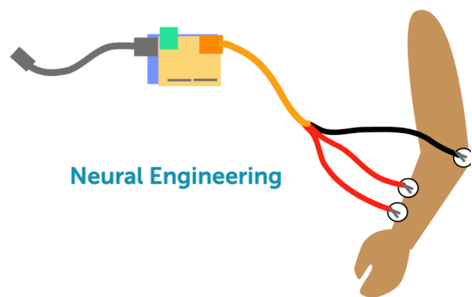
Fostering Computational Thinking Through Neural Engineering Activities in High School Biology Classes
PI: Ido Davidesco
Specific Disciplines or Concepts: Biology, neuroscience, engineering, critical thinking
Grade Levels: High
Project Description: High school students have limited opportunities to engage with computational thinking and engineering design in introductory science courses. To address this need, our team developed a month-long neural engineering curriculum for high school biology classes. Biology provides a promising context for broadening access, as biology classes are taken by a majority of US high school students, and biology research often incorporates computational tools and engineering practices.
At the beginning of the unit, students are introduced to Tilly, a teenager who lost her arms at a young age and uses bionic arms in her daily life. Throughout the unit, students explore how bionic arms work. As part of this process, they code and test a prototype gripper that opens and closes based on simulated and real inputs from muscles. The curriculum was co-designed with engineering and biology teachers and has been implemented to date in 11 schools.
Alongside developing students’ understanding of engineering practices and computational thinking, the unit also supports students’ understanding of biological concepts. Throughout the unit, the students collect and interpret data about their own nervous system through testing their reaction time and measuring their muscles using an EEG reader. To our knowledge, this is the first unit specifically designed to integrate and foreground computational thinking, engineering design, and biology at the high school level, and so provides an opportunity to develop our understanding of how students are able to integrate their understanding of the nervous system with their developing computational thinking and engineering practices.
Science and Engineering Practices Addressed: Designing & constructing models is a core practice across life sciences, engineering, and computing. This unit supports students’ growing understanding of models by giving them opportunities to develop and revise different representations of bionic arms—scientific models and computer programs. The programming was particularly designed to also support students’ development of computational thinking practices as they worked to design and revise algorithms.
Challenges and Strategies for Addressing Them: Most of the teachers who we worked with had no prior experience implementing engineering into their biology classrooms. To that end, the teachers all attended a 3-day-long professional development in the summer prior to their implementation to become familiar with the implementation, and our team members often joined their classes to provide real-time support. Our close collaboration also became an asset, as the teachers were also able to feedback along many points in the development and implementation of the unit, and we are currently continuing to work on developing additional teacher supports.
Initial Findings: Throughout the unit, students modeled bionic arms through developing both scientific models and computer programs. In preliminary analyses, we saw improvements in amount and relevance of detail and the inclusion of more mechanism from students’ initial and final models, and developing fluency working with computational programs. We also have seen marked variation between classes in their scientific models, but students had similar successes and struggles with the computational models, suggesting that integrated STEM units are amenable to a variety of starting points and teaching styles.
Products: You can learn more and contact our group on our website. The materials are currently available online for teachers to use at https://learn.concord.org/neural-engineering. We also have a number of publications and presentations from this work.
- Journal Articles:
- Boczar, D., Montrosse-Moorhead, B., & Davidesco, I. (2025). Refining nascent interventions through emergent design evaluation. Evaluation and Program Planning, 111, 102564. https://doi.org/10.1016/j.evalprogplan.2025.102564
- Aldemir, T., Davidesco, I., Kelly, S., Glasser, N., Kyle, A. M., Montrosse-Moorhead, B., & Lane, K. (2022). Investigating students’ learning experiences in a neural engineering integrated STEM high school curriculum. Education Sciences, 12(10). https://doi.org/10.3390/educsci12100705
- Conference Presentations:
- Davidesco, I., Montrosse-Moorhead, B., Boczar, D., Oas, J., Coburn, M. Dyke, A. M., & Bondaryk, L. (2025, June). Fostering computational thinking through engineering design activities in a high school biology course. Proceedings of the 19th International Conference of the Learning Sciences - ICLS 2025. Helsinki, Finland.
- Bondaryk, L., Davidesco, I., Dyke, A. M., Montrosse-Moorhead, B., Coburn, M., Boczar, D., Oas, J., & Dorsey, C. (2025, June). Embodied sensors and digital twins as an introduction to microprocessor programming for middle and high school non-CS majors. 2025 American Society of Engineering Education Annual Conference. Montreal, QC, Canada.
- Oas, J., Montrosse-Moorhead, B., Davidesco, I., & Boczar, D. (2024, April). Using an equity, diversity and inclusion lens to review computational thinking research. Poster presented at the annual meeting of the American Educational Research Association, Philadelphia, PA.
- Ademir, T., Glaser, N., & Davidesco, I. (2022, October). Exploring how user-centered approaches and empathy informed the co-design of a neural engineering curriculum [Conference presentation]. Association for Educational Communications & Technology convention, Denver, Colorado.
- Davidesco, I., Kyle, A., Montrosse-Moorhead, B., Rhoads, C., & Settlage, J. (2023, June). Fostering Computational Thinking Through Neural Engineering Activities in High School Biology Classes [poster]. DRK-12 PI Meeting, Arlington, Virginia.
- Kelly, S. M. (2022, November). Incorporating empathic engineering design in the high school science classroom [Conference presentation]. Massachusetts Association of Science Teachers [MAST] conference, Marlborough, Massachusetts.
- Kelly, S. M., Davidesco, I., & Kyle, A. (2023, July). Integrating computational thinking into a neural engineering high school curriculum [poster]. American Society for Engineering Education [ASEE], Baltimore, Maryland.
- Davidesco, I. (2022). Promoting computational thinking through neuroscience & engineering design activities. SciEd 2022. Washington, DC.
- Kelly, S. & Klimowicz, B. (2022). STEM + empathy in use in the design of an improved bionic arm. National Science Teaching Association. Chicago, IL.
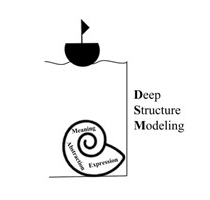
How Deep Structural Modeling Supports Learning with Big Ideas in Biology
PIs: Daniel Capps, Jonathan Shemwell
Specific Disciplines or Concepts: Cellular energetics/energy
Grade Levels: High
Project Description: The Deep Structure Modeling (DSM) project addresses the pressing need to more effectively organize science teaching and learning around “big ideas” that run through disciplines. Big ideas are important tools for learning because they enable students to organize and link information within a consistent knowledge framework. However, finding ways to teach big ideas effectively is a significant challenge. In DSM we strive to meet this challenge through modeling. Specifically, students synthesize big ideas by abstracting them as deep structures within sets of examples that contain them. As learners apprehend a deep structure within the examples, they use the tools and procedures of explanatory modeling to express and develop it. The result is a big idea that is flexible, meaningful, and easy to express, providing a strong framework for making sense of new information. DSM is a collaboration between The University of Alabama and the University of Georgia.
Connections to Other Disciplines or Student Experiences: Our project has made a connection between life science teaching and the teaching of energy as a big idea in physical science. We know that to function as a big idea for teaching and learning, a concept must be more than an encompassing theme; it must be an efficiently represented and meaningful abstract relation structure. In physical science, energy is often taught in this way, as a structured set of relations that supports coherent understanding across topics. By contrast, in life science, energy is rarely presented as such a relation structure, and indeed, insufficient attention is given to the content and meaning of energy as an idea. As a result, energy does not yet fulfill its potential to support teaching and learning in life sciences.
Initial Findings: Big ideas (or deep structures), particularly in the form of models, are powerful tools for interconnecting and enriching the meaning of life sciences phenomena (Shemwell & Capps, 2023). Learning with a big idea can be an epistemic process whereupon students generate and warrant new knowledge (Shemwell & Capps, accepted).
Products: The project includes a two-week unit on teaching cellular respiration by modeling the big idea of energy. Access these materials at the following link: https://modelingbigideas.org/.
Suggested Reading:
- Shemwell, J. T., Capps, D. K. (accepted). The epistemic generativity of using a model of a big idea. Science Education.
- Shemwell, J. T., Capps, D. K., Fackler, A. K., & Coogler, C. H. (2023). Integrative analysis using big ideas: Energy transfer and cellular respiration. Journal of Science Education and Technology, 32(4), 510-529.
- Capps, D. K., & Shemwell, J. T. (2020). Moving beyond the model as a copy problem: investigating the utility of teaching about structure-preserving transformations in the model-referent relationship. International Journal of Science Education, 42(12), 2008-2031.
Additional Projects
We invite you to explore a sample of the other recently awarded and active work with a focus on life sciences education.
- Biomimicry as an Authentic Anchor: Giving Teachers the Tools to Adapt an Interdisciplinary Middle School Curriculum (PI: Debra Bernstein)
- Developing a Modeling Orientation to Science: Teaching and Learning Variability and Change in Ecosystems (PIs: Richard Lehrer, Alison Miller, Leigh Peake
- Empowering Changemakers: Urban Biodiversity Initiative for Teachers and Youth (PI: Ashley Iveland)
- Exploring the Integration of Systems Thinking in Biology in Participatory Professional Development (PI: Michael Cassidy)
- Improving the Teaching of Genetics in High School to Avoid Instilling Misconceptions About Gender Differences (PI: Brian Donovan, Tia Madkins)
- SimSnap: Orchestrating Collaborative Learning in Biology through Reconfigurable Simulations (PIs: Sadhana Puntambekar, Michael Tissenbaum)
- Transforming Scientific Practices to Promote Students Interest and Motivation in the Life Sciences: A Teacher Leadership Development Intervention (PI: Pauline Chinn)
Related Resources
- DRK-12 Publications:
- Building Argumentation Skills in the Biology Classroom: An Evolution Unit that Develops Students’ Capacity to Construct Arguments from Evidence
We describe a scaffolded claims-evidence-reasoning (CER) argumentation framework that is embedded within a new eight-week, freely available curriculum unit developed by the Genetic Science Learning Center – Evolution: DNA and the Unity of Life. - ‘But, Is It Supposed to be a Straight Line?’ Scaffolding Students’ Experiences with Pressure Sensors and Material Resistance in a High School Biology Classroom
This case study examines how material resistance (limitations posed by the physical world) and graph interpretation intersected during a high school biology investigation using digital sensors. - A Conceptual Framework for Organizing Active Learning Experiences in Biology Instruction
In this paper, we present a framework to design biology instruction that incorporates all active learning strategies. We review active learning research in undergraduate biology courses, present a framework for organizing active learning strategies, and provide clear implications and future research for designing instruction in introductory undergraduate biology courses. - Development and Pilot Testing of a Three-Dimensional, Phenomenon-based Unit that Integrates Evolution and Heredity
To realize the promise of the Next Generation Science Standards, educators require new three-dimensional, phenomenon-based curriculum materials. We describe and report on pilot test results from such a resource—Evolution: DNA and the Unity of Life. Designed for the Next Generation Science Standards, this freely available unit was developed for introductory high school biology students. - Development of an Observation Protocol for Teachers' Culturally and Linguistically Responsive Science Instruction
This study is part of a larger project on culturally and linguistically responsive instruction for multilingual learners (MLs) in biology (CLIMB), aimed at enhancing MLs’ engagement in science practices, biology content, and language development. - Impact of an Adaptive Dialog that Uses Natural Language Processing to Detect Students’ Ideas and Guide Knowledge Integration
This study leverages natural language processing (NLP) to deepen our understanding of how students integrate their ideas about genetic inheritance while engaging in an adaptive dialog. - The Impact of High School Life Science Teachers’ Subject Matter Knowledge and Knowledge of Student Misconceptions on Students’ Learning
Using a U.S. sample of 79 biology teachers and their 2749 high school students, we investigate whether teachers’ subject matter knowledge (SMK) and knowledge of students’ misconceptions (KOSM) in high school life science are associated with students’ posttest performance on multiple-choice test items designed to reveal student misconceptions, after controlling for their pretest scores. - The Joys of Teaching Ecology in K–12 and Informal Settings
While many things motivate ecology educators, the chance to continue to discover things about the environment and experience the joy of understanding those things through the eyes of their students is paramount. While many ecological careers (eg professorships) involve a teaching component, here we focus on jobs where teaching is the focus, specifically K–12 and informal ecology education. - ‘Me Hizo Sentir Como Científica’: The Expressed Science Identities of Multilingual Learners in High School Biology Classrooms
Science identity development begins in school-aged years, when multilingual students (MLs) are often marginalised in the classroom due to language challenges and low expectations placed on them. This descriptive multiple case study explores the science identities expressed by six US high school MLs in their biology classrooms. - Measuring Pedagogy and the Integration of Engineering Design in STEM Classrooms
The present study examined changes in high school biology and technology education pedagogy during the first year of a three-year professional development (PD) program using the INSPIRES educative curriculum. - Newcomer Emergent Bilingual Students’ Meaning-Making in Urban Biology Classrooms: A Communities of Practice Perspective
This study investigated how newcomer emergent bilinguals made meaning in two 9th-grade biology classrooms. - A Primer for Developing Measures of Science Content Knowledge for Small-Scale Research and Instructional Use
This essay, intended for faculty involved in small-scale projects, courses, or educational research, provides a step-by-step guide to the process of developing, scoring, and validating high-quality content knowledge assessments. We illustrate our discussion with examples from our assessments of high school students’ understanding of concepts in cell biology and epigenetics. - Probing the Relevance of Chemical Identity Thinking in Biochemical Contexts
The solving of problems in biochemistry often uses concepts from multiple disciplines such as chemistry and biology. Chemical identity (CI) is a foundational concept in the field of chemistry, and the knowledge, thinking, and practices associated with CI are used to answer the following questions: “What is this substance?” and “How is it different from other substances?” In this study, we examined the relevance of CI in biochemical contexts and first explored the ways in which practicing biochemists consider CI relevant in their work. - Professional Development for STEM Integration Analyzing Bioinformatics Teaching by Examining Teachers' Qualities of Adaptive Expertise
In this study, we investigated challenges teachers experienced in teaching a problem-based bioinformatics unit after participating in professional development (PD) activities that were carefully constructed using research-based effective PD characteristics. - The Power and Promise of a Digital Tool for Teaching Inquiry Science
Two case studies, both set in public high schools, one in New York City, another in suburban Massachusetts, describe ways that a newly developed cybertool (the electronic Teacher Guide or eTG) can help biology teachers improve student learning by facilitating teachers' implementation of an innovative curriculum and enhancing teachers' subject matter and pedagogical content knowledge. - Understanding Students' Sense-Making Processes When Faced with Unexpected Data: A Case Study in High School Biology
Examining a lesson in a high school biology unit that utilized noisy sensor data, we sought to understand the ways students engaged in active reasoning about the data and the factors that influenced this process. - Validating a Model for Assessing Science Teacher’s Adaptive Expertise with Computer-Supported Complex Systems Curricula and Its Relationship to Student Learning Outcomes
In this study, we propose and validate a model of adaptive expertise needed for teachers to successfully deliver NGSS-informed computer-supported complex systems curricula in high school science classrooms.
- Building Argumentation Skills in the Biology Classroom: An Evolution Unit that Develops Students’ Capacity to Construct Arguments from Evidence
- Related Spotlights:
- Analyzing and Interpreting Data (2020)
- Argumentation in STEM (2023)
- Earth and Environmental Science (2021)
- Modeling in Science and Mathematics Education (2020)
- Physical Sciences: Chemistry and Physics Education (2025)
- Teaching and Learning About Infectious Diseases (2020)
References
Dogucu, M., Kazak, S., & Rosenberg, J. M. (2024). The design and implementation of a bayesian data analysis lesson for pre-service mathematics and science teachers. Journal of Statistics and Data Science Education, 33(2), 177-188. https://doi.org/10.1080/26939169.2024.2362148
Gagnon, D. J., & Swanson, L. (2023, October). Open game data: a technical infrastructure for open science with educational games. In Joint International Conference on Serious Games (pp. 3-19). Cham: Springer Nature Switzerland.
Liu, X., Slater, S., Andres, J., Swanson, L., Scianna, J., Gagnon, D., Baker, R. S. (2023). Struggling to detect struggle in students playing a science exploration game. In CHI PLAY Companion '23: Companion Proceedings of the Annual Symposium on Computer-Human Interaction in Play. https://dl.acm.org/doi/10.1145/3573382.3616080
Liu, X., Slater, S., Swanson, L., Metcalf, S.J., Gagnon, D.J., Baker, R. S. (2025). Identifying when and why students choose to quit jobs in a science exploration game. In J. L. Plass & X. Ochoa (Eds.), Serious Games. JCSG 2024. Lecture Notes in Computer Science, vol 15259. Springer, Cham. https://doi.org/10.1007/978-3-031-74138-8_5
Metcalf, S., Scianna, J., & Gagnon, D. (2024). Experiences of Personal and Social Immersion in a Videogame for Middle School Life Science. iLRN 2024.
Metcalf, S.,M., Gagnon, D., Slater, S. (2023). Shifts in Student Attitudes and Beliefs about Science Through Extended Play in an Immersive Science Game. 2023 9th International Conference of the Immersive Learning Network (iLRN). San Luis Obispo, USA.
Metcalf, S. J., Sommi, A., Haddadin, S., Scianna, J., & Gagnon, D. (2021, May). Work-in-Progress–—Game Design Informed by Learning Progressions for Science Practices. In 2021 7th International Conference of the Immersive Learning Research Network (iLRN) (pp. 1-3). IEEE.
Shemwell, J. T., Capps, D. K. (accepted). The epistemic generativity of using a model of a big idea. Science Education.